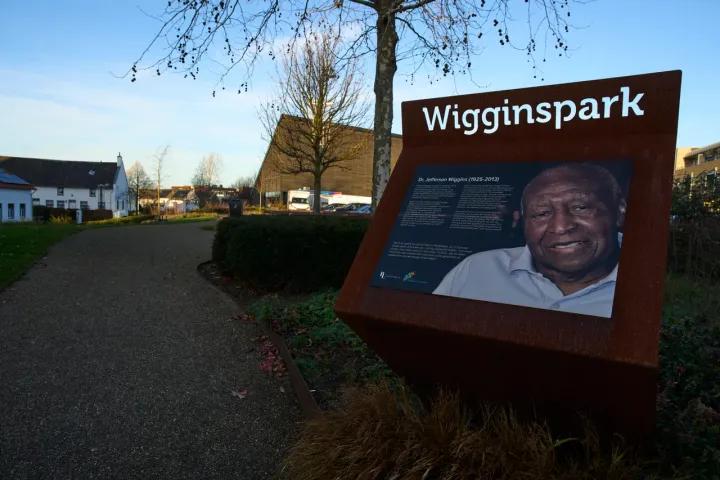By Mazhun Idris
As cities go, Kano in Nigeria might have chosen to exist in the reflected glory of being the birthplace of Africa's richest person, Aliko Dangote, or the hometown of two of the country's past military heads of state, Murtala Muhammad and Sani Abacha.
But history ordained a higher place for Kano in the hierarchy of civilisation as well as the continent's great cities.
Since being founded in the 10th century, this millennium-old West African city has been one of the foundries of global trade, diplomacy, politics, and aviation.
Kano's monumental history stretches from the uncertainty of medieval times to the relative stability of modern Nigeria, functioning today as the capital of Kano State in the country's north. It is Nigeria’s most populous state.
Kano had been ruled by autonomous kings, sultans and emirs until the British conquest of the city in 1903 after British troops under the colonial military administrator, Lord Lugard, invaded the region.
Although decrepit, the fact that the structure has withstood the ravages of eight centuries has led some historians to acknowledge it as one of the oldest continuously occupied wall in the whole of sub-Saharan Africa. Many such ancient walls of its time were either vacated or destroyed over the past millennium.
Gated community
Known as "Ganuwa", or more commonly "Garu" or "Badala" in the Hausa language, the fort retains its earthen structure and encircles the entire breadth of the old city perimeter in the warmth of history's embrace. It's fascinating to even contemplate that this wall has housed an entire city for almost 1,000 years.
Dr Mahmud Abba, a researcher on modern and ancient gated communities, and Dr Murtala Uba Mohammed, his colleague in the faculty of earth and environmental sciences at Bayero University Kano, see the Kano City Wall as more than just a medieval structure that has survived the depredations of nature and humanity.
According to them, the old mercantile city of Kano was a trans-Saharan trading post, housing one of the oldest markets in Africa, the 1,000-year-old Kurmi Market, where merchant caravans came from as far as the Mediterranean to trade in crafts, spices, leather, textile, iron, and brass items.
The foundation and evolution of Kano as a historic bastion of trade, scholarship, and cottage industry was greatly influenced by its cosmopolitan population, and their spiritual and indigenous civilisations, TRT Afrika learnt during extensive conversations with the two experts.
Kano as a city state was located within a region with imperialistic empires, warring kingdoms and competing vassal states. Famous among them were Zamfara, Kwararrafa, Katsina, Zazzau, Kanem Bornu, and Songhai.
Beyond the armies of these rival territories were stateless exiled forces, plundering marauders and slave raiders operating in the hinterland of the Sahel, up to the borderless expanse of the Sahara.
To secure its growing population and control the movement of people, the third king of Kano, Sarki Gijimasu, who ruled from 1095 to 1134, laid the foundation for a wall around the city.
Durable design
The wall was designed along with two moats built astride it for added defence advantage. The construction was done by local builders and artisans under the guidance of the viziers.
The structure was built with local Tubali mudbrick of spherical shape, mixed with local materials like dried grass. Its exterior was plastered with local composite made from the peels of honey locust, called Makuba.
A number of gated entrances dotted its course at intervals, with each gate having a unique name and design.
The gates were manned by administrative personnel designated to manage its opening and closure. People coming to town at night after the gates closed had to wait outside until morning.
During and after its construction, the king would personally patrol the wall from time to time, inspecting its integrity and order repairs as and when needed.
The earthwork stood at varying heights, the minimum of which was nine metres, and peaking at 25 metres. Its base was about 12 metres thick.
Environmental significance
Dr Mohammed is among the passionate defenders of the Kano City Wall as a heritage not just in terms of the region's roots but also the environment.
"Over time, the trenches and hundreds of ponds that were dug during the construction of the wall became crucial to preserving water for laundry, cooking and feeding animals. They recharged the groundwater reservoirs and absorbed runoff and excess discharge, thus reducing the chance of urban flooding," he tells TRT Afrika.
Dr Mohammed advocates adopting "international best practices in historical monument administration" to preserve the integrity of this ancient structure and other sites.
"This is the way our generations will honour the blood and sweat of our ancestors, who had defended Kano and bequeathed it to us," he says.
Disappearing legacy
Once towering over the city as an impregnable shield, and seeing off climate and environmental challenges, the Kano City Wall has largely disappeared in parts, or is in ruins and in dire need of restoration elsewhere.
Only its gates stand upright, having been fancifully modernised against their traditional medieval build. The ruins have either vanished or remain hidden behind modern commercial buildings.
Dr Mahmud decries the defacing of the Kano wall and its conversion into commercial plots, as well as the fact that it still isn't a World Heritage Site or even a priority site in UNESCO's tentative list.
Nasiru Wada Khalil, a culture enthusiast, argues that if countries like India can preserve heritage monuments like the Taj Mahal, which is less than 500 years old, and create a tourism economy around that, "we surely cannot lose the millennium-old Kano City Wall".
“Kano wall in all its majesty is what we have to show our kids as our heritage, and to visitors and tourists, as evidence of our ancient indigenous civilisation," he says.
Dr Mahmud bemoans the fact that despite several pleas to restore the Kano City Wall to its original glory, it has been allowed to decay.
The government of Kano State recently announced a plan to reclaim the lost wall, although when that translates into reality remains to be seen.
























